Enchanting L’Isle: Kayaking and Cycling the River Isle
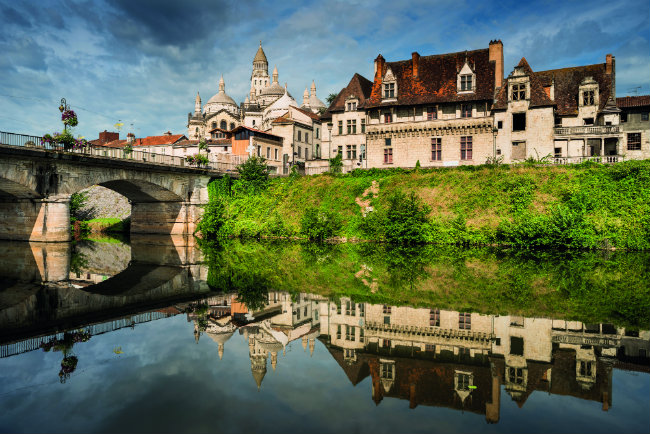
From Roman remains to deep mining tunnels, Heidi Fuller-love discovers a host of cultural treasures as she kayaks and cycles down the River Isle from Périgueux to Libourne
The Isle River, a tributary of the mighty Dordogne, starts right up in the Massif Central mountains, south of Limoges in the Haute-Vienne département, and flows into the Dordogne at Libourne, just east of Bordeaux. In all it is about 255 kilometres long, though it is only navigable for the last 90 kilometres from Périgueux. I’m doing the trip the hard way: kayaking down the L’Isle from Périgueux through the Dordogne département, then cycling the rest of the route across the Gironde.
I arrive in Périgueux the day before the start of my trip, so I have time to tour this charming city founded 2,000 years ago by four Celtic tribes known as the Pétrocores. To get a handle on Dordogne’s capital, I hop on a little train that leaves from the boulevard Montaigne and jiggle through narrow alleys, past half-timbered houses, trendy shops, and glorious medieval churches to the Vesunna museum.
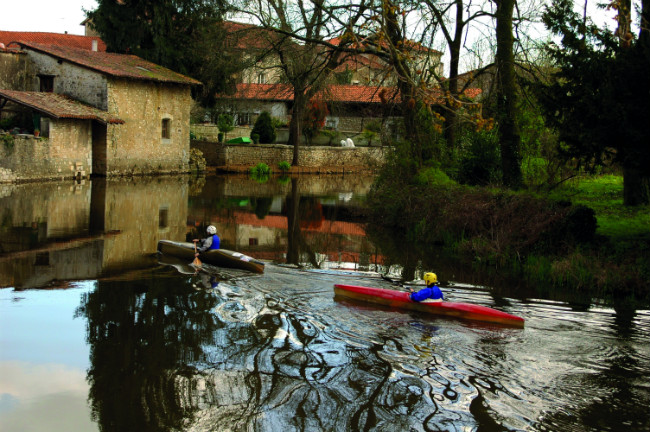
My journey begins with a kayak in Périgueux. Photo: Heidi Fuller-Love
Designed by Jean Nouvel – the architect responsible for Paris’s fabulous Fondation Cartier – the museum, with its floor-to-ceiling windows, is like an immense glass box packed with a fabulous collection of Roman statues, household items, jewellery and kitchen utensils set out amongst the remains of two Gallo-Roman villas that were discovered on this site in 1959.
After my visit I join one of the museum’s tasting sessions, where I sample a glass of sticky sweet hydromel, a slice of baguette smeared with fishy garum and other dishes that were popular here in Périgueux a couple of millennia ago.
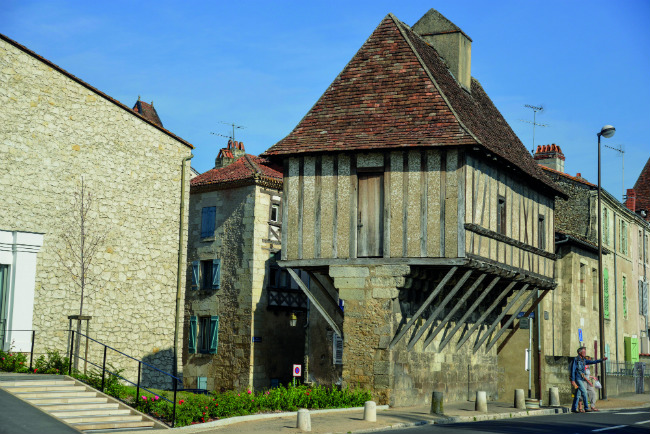
A half-timbered house in Périgueux. Photo: Gilbert Alban/ CRTA-L’eschif de Creyssac
EXTRA CALORIES
Returning to the 21st century I shop for presents – truffles, chocolates and chestnut honey – in the little triangle of streets behind the place Saint-Louis, and then head out to the Ferme Saint-Louis for dinner.
In this lovely rustic restaurant housed in one of the city’s eye-catching medieval buildings, I gorge on foie gras, meltingly tender confit de canard and a big plate of pungent local goat’s cheeses – comforting myself with the knowledge that, after all, I am going to need all those extra calories for the following days’ adventure!
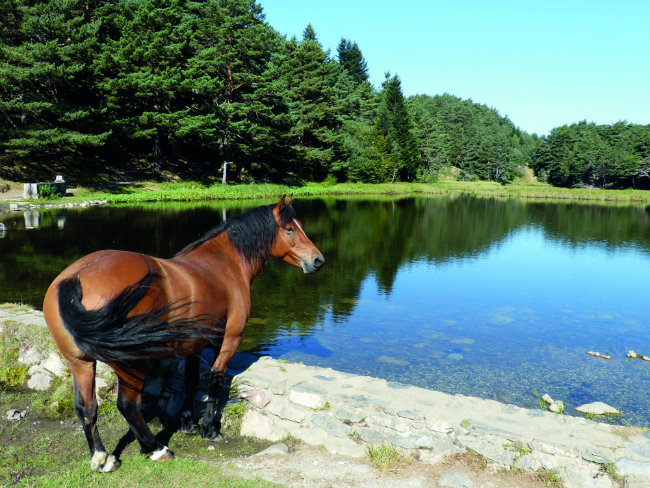
A horse admires my progress. Photo: Heidi Fuller-Love
Up early the next day, I head out to pick up my vessel from Périgueux Canoë-Kayak. The manager, who waits for me by the river bank, tells me that the Isle River has marked seasonal fluctuations, with very high levels in winter and very low levels at the height of summer. Luckily, it is late spring so, apart from a nippy northeast wind, I’ve picked a good time to travel.
A mysterious mist covers the river like a grey cape as I push out from the shore, but it’s rising by the time I arrive in centre stream. Soon the sun is shining hotly, burning the last golden tongues of mist from the water’s surface like smoke. Paddling to keep myself midstream, I pass beneath tall plane trees standing above grassy banks where plump, beaver-like coypu brush their whiskers or plop into the water and paddle ahead of me. From time to time I meet a lock or a waterfall and have to walk my lightweight kayak around these obstacles.
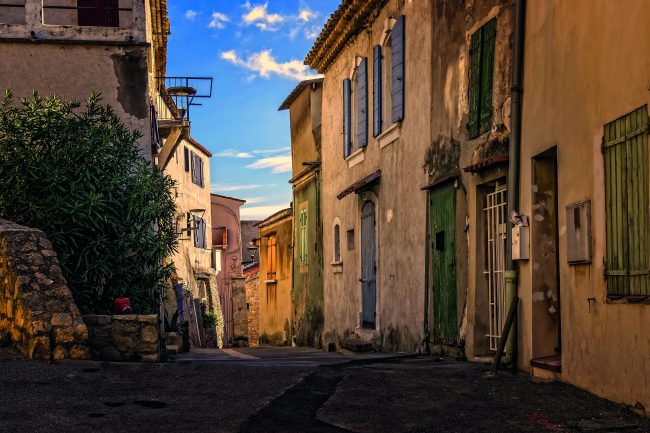
The cycling leg offers the chance to get acquainted with pretty towns. Photo: Heidi Fuller-Love
Around midday I reach Saint-Astier, a small town built around a tall clock tower that derives its name from Astérius, a 6th-century hermit who once performed miracles here. Tying my kayak to a tree, I scramble up the bank and follow a winding path through a cluster of red-tiled houses to meet local guide Myriam, who will take me to see the town’s famed tunnels.
Globally renowned since the 1850s for its lime, or chaux, which is used for everything from building houses to sterilising corpses, the ground beneath Saint- Astier is a warren of mining passageways. Making my way through the spooky galleries in candlelit gloom I learn about the lives of the men who used to mine this poisonous white substance. It’s a relief to be above ground again and I celebrate with a picnic of crusty baguette filled with Camembert and a frangipane-filled croissant aux amandes on the river bank.
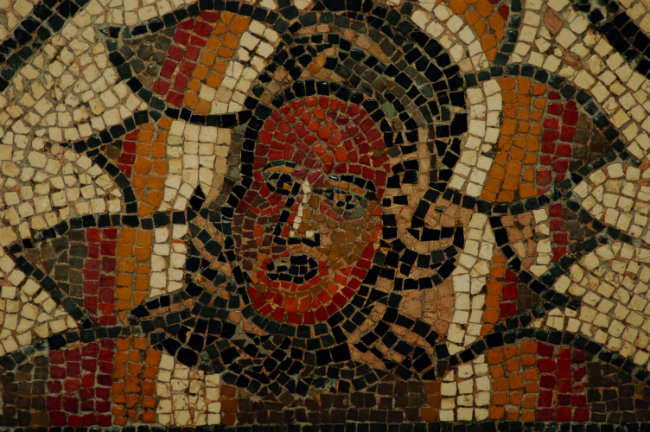
A Gallo-Roman mosaic in Périgueux. Photo: Heidi Fuller-Love
Back in my kayak I head for Neuvic. The river is wider now and lined with limestone houses surrounded by fields of grazing cows. At Neuvic, I pay a visit to the pretty Renaissance castle, packed with 17th-century furniture and frescoes, before wandering through the hamlet’s cobbled streets, stopping to admire the mouthwatering window displays of Lominé, a bakery that has been making traditional guimauve (marshmallow) for more than a century.
Bright and early the following morning, I paddle on to Mussidan, a stopover on the Vézelay offshoot of the Saint-Jacques de Compostelle route. The streets are filled with pilgrims wearing hobnail boots and buying plump strawberries and homemade onion tarts in the town’s busy morning market. Ready to hop in the saddle, I jettison my kayak in Montpon-Ménestérol, nicknamed La Capitale de l’Orgue thanks to its churches’ pipe organs, and set off on the last leg of my trip to Libourne.
Following tiny back roads fringed with tall grass and grazing cows, I occasionally catch glimpses of the Isle River glittering in the distance. It’s a beautiful, warm, sunny day – ideal for a picnic – and I tuck into lunch at Saint-Seurin, a charming hamlet full of crumbling stone houses overlooking a pink water lily-strewn stretch of the Isle. At Coutras, I cross the Isle one last time before whizzing down into Libourne – a brisk, briny sea breeze overpowering the water’s muddy scent.
Known as the Gironde region’s wine-making capital, Libourne was once a fortified town and large parts of the 14th-century walls remain. Half an hour’s drive from Bordeaux, Libourne makes a great base for visiting the local vineyards of Pomerol and Saint-Emilion. Seafood is king here and, my adventures over and my appetite rising, I fully intend to make the most of the local anise-stuffed prawns…
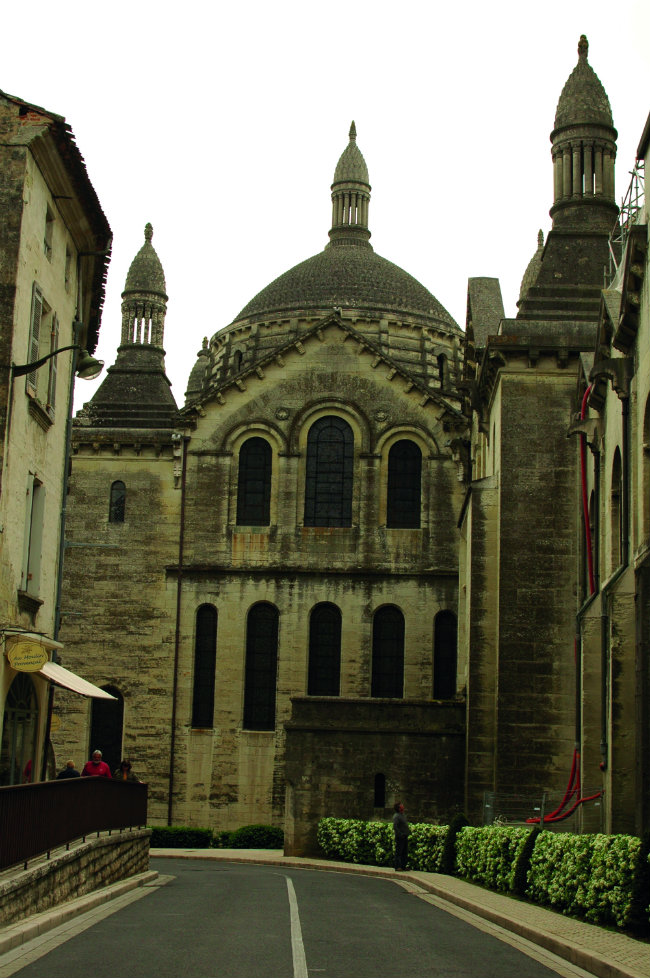
In Périgueux. Photo: Heidi Fuller-Love
DORDOGNE ESSENTIALS
GASTRO SUPPING
Renowned for gourmet food, the Dordogne has plenty of speciality dishes, including a sauce flavoured with Madeira and truffles that was invented here in Périgueux, and which is used to make dishes à la Périgourdine. Truffles are used in plenty of dishes, too – look out for truffles stuffed with foie gras, and truffe à la cendre, where the expensive fungus is trussed in slices of bacon and slung into the hot ashes of an open fire to cook.
As one of France’s largest walnut producing regions, Dordogne is also renowned for walnut cakes, walnut wine and walnut oil. For a fitting finale to any meal, order a few slices of the local Trappe cheese cured in walnut liqueur.
WHERE TO STAY
Le Caldero: www.hotelcalderomontpon.com
Château des Reynats: www.chateau-hotel-perigord.com
Comfort Hôtel Régina: www.comfort-perigueux.fr
USEFUL WEBSITES
Dordogne Périgord Tourisme: www.dordogne-perigord-tourisme.fr
Office de Tourisme de Périgueux: www.tourisme-perigueux.fr
FOOD LOVERS SHOULDN’T MISS…
The annual Salon International du Livre Gourmand held in Périgueux in November: www.livre-gourmand.com
From France Today magazine
Share to: Facebook Twitter LinkedIn Email
Leave a reply
Your email address will not be published. Required fields are marked *




REPLY
REPLY